Muslim-friendly versions of popular anime dishes across Japan!
Cherry Blossom Season in Japan: Top Places And Dates to Visit in 2025
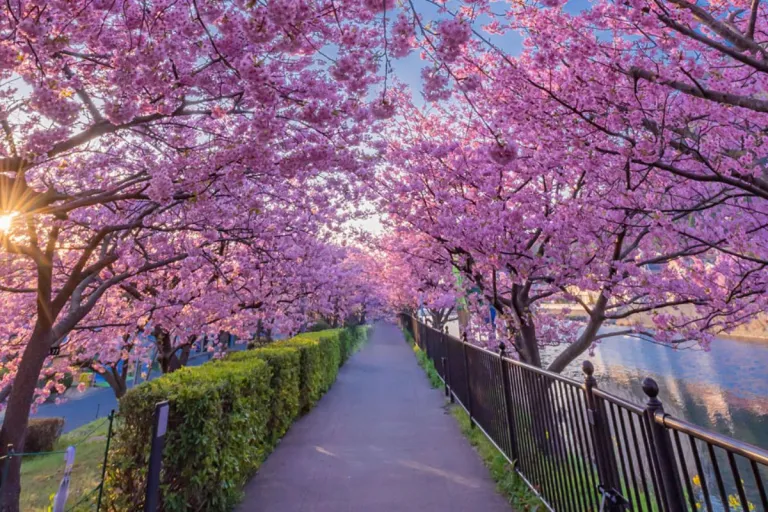
If there’s one thing that embodies spring in Japan, it’s the arrival of Sakura — cherry blossoms. This fleeting, delicate beauty has been a part of Japanese culture for centuries, celebrated with picnics, festivals, and a sense of awe. Those dreaming of seeing this magical season can find 2025 to be an excellent year. Here's a comprehensive guide to experiencing Japan’s cherry blossoms at their finest.
Why cherry blossoms matter
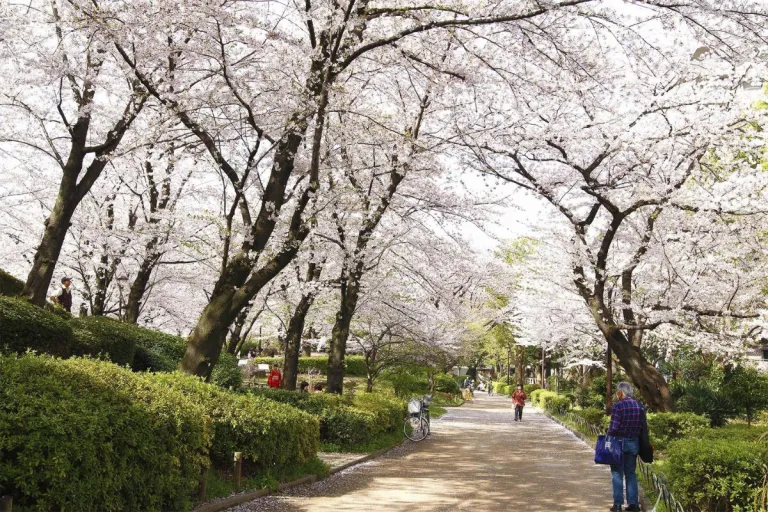 Image credit: JAPANiCAN | Official Facebook
Image credit: JAPANiCAN | Official Facebook
Also read: Best Halal Travel Guide 2025 For Japan
The tradition of hanami (flower viewing) isn’t just about gazing at flowers; it’s a celebration of life, renewal, and impermanence. Cherry blossoms have long been a symbol in Japanese art, literature, and culture, reminding people of the transient beauty of life. Whether it’s sharing a picnic with friends or strolling under illuminated trees at night (a practice known as yozakura), cherry blossom season is a social and spiritual experience combined.
When is cherry blossom season?
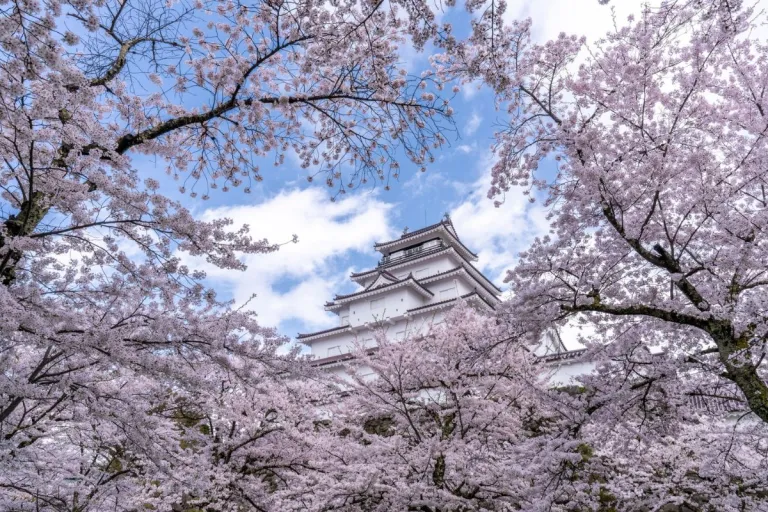 Image credit: JAPANiCAN | Official Facebook
Image credit: JAPANiCAN | Official Facebook
The timing of cherry blossoms varies by location, climate, and the type of tree. The earliest blooms start in Okinawa as early as January, while Hokkaido’s blossoms appear in May. For most major cities and tourist spots, the best time is between late March and early April. A good rule of thumb? The further south the location, the earlier the blossoms appear.
Top cherry blossom destinations in Japan
1. Mount Yoshino, Nara Prefecture
Arguably Japan’s most famous cherry blossom destination, Mount Yoshino is a pink paradise with over 30,000 sakura trees carpeting the Kii Mountains. The star attraction is a massive cherry tree whose branches gracefully bow toward the ground. Visitors can enjoy the blossoms day and night, as the tree is illuminated from dusk until midnight.
Best time to visit: Early April (predicted full bloom: 5 Apr 2025).
2. Himeji Castle, Hyogo Prefecture
The striking white walls of Himeji Castle make a stunning contrast to the 1,000 cherry trees surrounding it. A UNESCO World Heritage Site, this 14th-century castle becomes even more picturesque when framed by Sakura in full bloom.
Best time to visit: Late March to early April (predicted full bloom: 2 Apr 2025).
3. Hirosaki Castle, Aomori Prefecture
Nestled in northern Japan, Hirosaki Castle offers a charming setting with its three-story structure, fortified moat, and a park that’s a haven for cherry blossom lovers. The park’s two varieties of trees mean blossoms can peak at different times, extending the viewing season.
Best time to visit: Late April (predicted full bloom: 25 Apr 2025).
4. Tokyo
The capital city goes all out for the Sakura season. Ueno Park is a must-visit for its 1,000 cherry trees and festive atmosphere, but it does get crowded. For a quieter experience, Shinjuku Gyoen offers spacious lawns perfect for picnics, and the Chidorigafuchi Moat near the Imperial Palace is breathtaking. At night, the Nakameguro canals are adorned with lights, creating a magical yozakura experience.
Best time to visit: Late March to early April (predicted full bloom: 29 Mar 2025).
5. Kyoto
As Japan’s ancient capital, Kyoto is a sakura hotspot. Maruyama Park’s iconic weeping cherry tree is a highlight, as is the Philosopher’s Path, where cherry trees line a serene canal. For a unique view, travellers can try the seasonal Sagano Scenic Railway, which passes through a tunnel of blossoms.
Best time to visit: Late March to early April (predicted full bloom: 31 Mar 2025).
6. Matsumae Park, Hokkaido Prefecture
For those venturing north, Matsumae Park offers an extended sakura season thanks to its 250 cherry tree varieties. This remote spot is home to Japan’s northernmost castle, which becomes even more enchanting when lit up at dusk.
Best time to visit: Late April to early May (predicted full bloom: 7 May 2025).
7. Kumamoto Castle, Kumamoto Prefecture
On the southern island of Kyushu, Kumamoto Castle is a less crowded but equally spectacular spot for hanami. The grounds feature hundreds of cherry trees, making it a perfect place for a peaceful stroll or picnic.
Best time to visit: Late March (predicted full bloom: 27 Mar 2025).
8. Miharu, Fukushima Prefecture
Off the beaten path, Miharu is home to the legendary 1,000-year-old Takizakura — a massive waterfall cherry tree. The town’s name, meaning "Three Springs," reflects the simultaneous blooming of its plum, peach, and cherry trees.
Best time to visit: Mid-April (predicted full bloom: 16 Apr 2025).
9. Fuji Five Lakes, Yamanashi Prefecture
The sakura here comes with an iconic backdrop: Mount Fuji. Lake Kawaguchi, in particular, offers spectacular views of the mountain framed by cherry blossoms. Many visitors opt for an onsen stay to enjoy the scenery while soaking in hot springs.
Best time to visit: Early April (predicted full bloom: 10 Apr 2025).
10. Okinawa
For those eager to get a head start on cherry blossom season, Okinawa is the place to go. This tropical region sees the first blooms in January, celebrated with the Motobu Yaedake Cherry Blossom Festival. The sakura here is a unique variety with deeper pink hues.
Best time to visit: Mid-January to early February.
Tips for making the most of cherry blossom season
Planning to experience cherry blossom season in Japan can be a magical and unforgettable adventure, but it does require a bit of preparation to make the most of it. Firstly, it’s essential to plan ahead. With the Sakura season being one of the busiest times for tourism in Japan, flights and accommodations in popular cities like Tokyo and Kyoto tend to be booked out months in advance. Early planning ensures you won’t miss out on staying in prime locations.
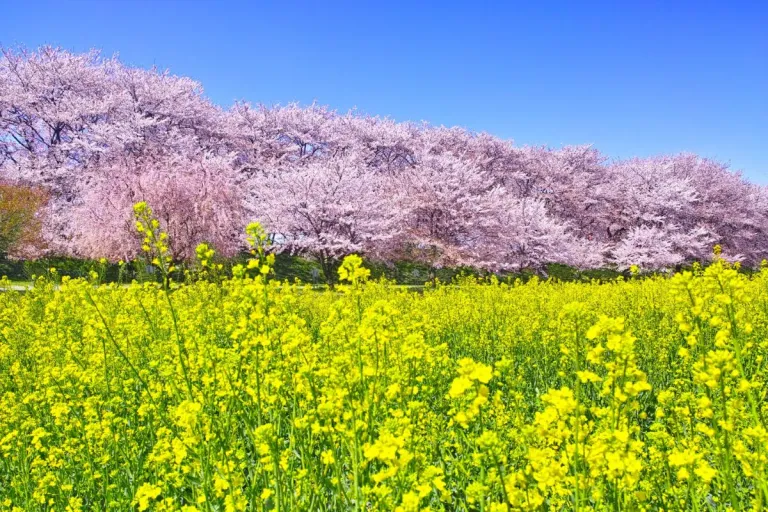 Image credit: JAPANiCAN | Official Facebook
Image credit: JAPANiCAN | Official Facebook
Also read: 10 Private Muslim-Friendly Onsens in Japan for Best Hot Spring Experience
When it comes to visiting popular hanami spots, arriving early is a game changer. These locations can get incredibly crowded, particularly during weekends, so showing up in the morning allows visitors to secure the best viewing or picnic spots without hassle. Speaking of picnics, joining the locals by bringing a blanket and enjoying seasonal treats under the blossoms is a delightful way to immerse yourself in the tradition. Many supermarkets offer spring-themed bento boxes, perfect for this occasion.
Night viewing, or yozakura, adds another dimension to the cherry blossom experience. Many parks illuminate their trees after dark, creating an enchanting atmosphere that contrasts beautifully with daytime viewing. For those seeking a quieter, less crowded experience, this is a must-try.
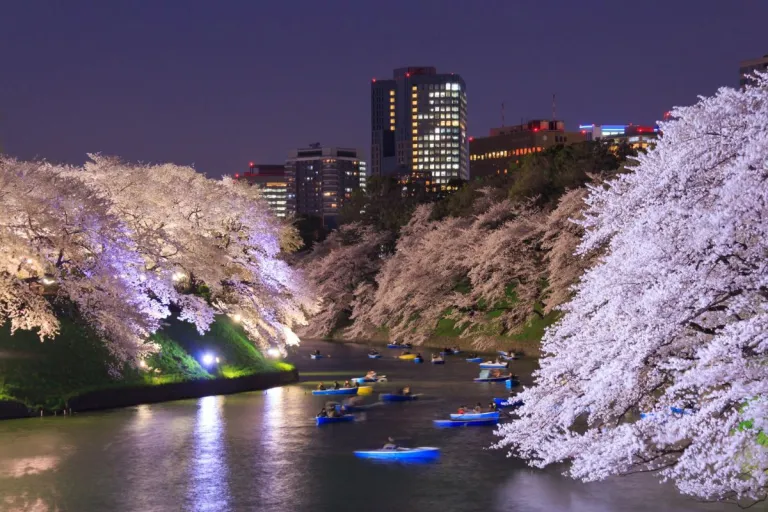 Image credit: JAPANiCAN | Official Facebook
Image credit: JAPANiCAN | Official Facebook
Lastly, flexibility is key. Cherry blossom timings can vary depending on weather conditions and climate changes. Staying updated with the latest Sakura forecasts as your travel dates approach will help ensure you catch the blossoms at their peak.
Beyond Sakura: Alternatives and add-ons
For those who miss the main cherry blossom season, other seasonal blooms can be a great alternative. Plum blossoms (ume) herald the arrival of spring in February and March, while wisteria creates cascading purple tunnels in late April and May. Ashikaga Flower Park, near Tokyo, is a spectacular spot for wisteria viewing.
Published at
About Author
Aimi Zulkiflee
Subscribe our Newsletter
Get our weekly tips and travel news!
Recommended Articles
10 Halal Anime Food Guide for Muslim Travellers in Japan 10 Hidden Gems in Osaka Perfect For Muslim Travellers Food, culture, neon lights, history, friendly locals — OSAKA!
10 Muslim-Friendly Airbnbs in Sapporo, Japan 2025 Choose your mood for staycation now!
Beyond Sakura: 10 Muslim-Friendly Wisteria Spots in Japan 2025 Catch it between late April to Early May!
10 Real-Life Anime Locations Every Muslim Otaku Fan Must Visit The fact that Japan look like anime in real life, mindblowing!
Latest Articles
The Ultimate Guide For Muslim Travellers to Great Wisteria Festival in Japan You can spot 160-year-old wisteria tree that covers 1,000 sq meters!
Mona Lisa Relocation 2031: What Muslim Travellers Should Know About the Louvre Makeover You can catch Mona Lisa’s smile in under 1 minute!
Penang Airport Launches MyBorderPass: Faster Immigration For 63 Countries Faster customs for 63 countries at Penang Airport!
Travel Alert: Beijing and Northern China Hit by Extreme Winds — Safety Tips Inside China warns people under 50kg to stay indoors amid strong wind alert!
Bali Sets New Rules For Foreign Tourists, Here's What You Need To Know Bali's new rules all foreign tourists need to know before your visit!

